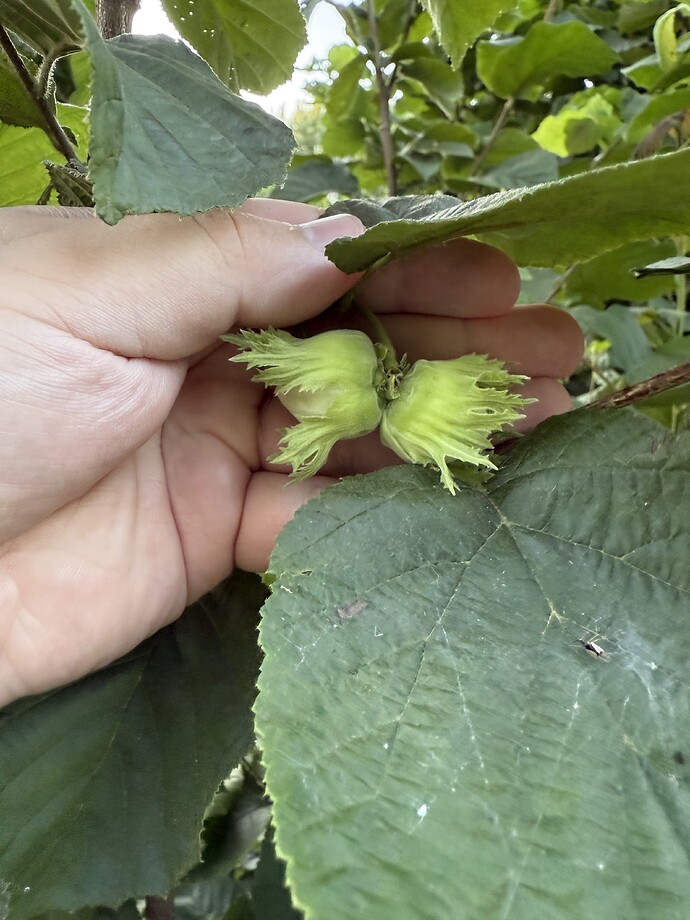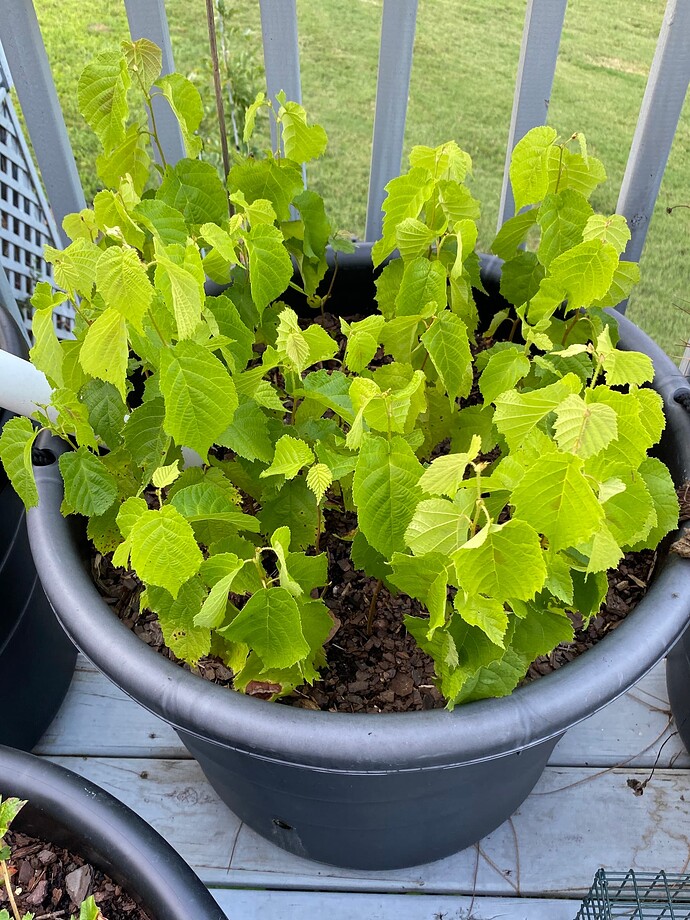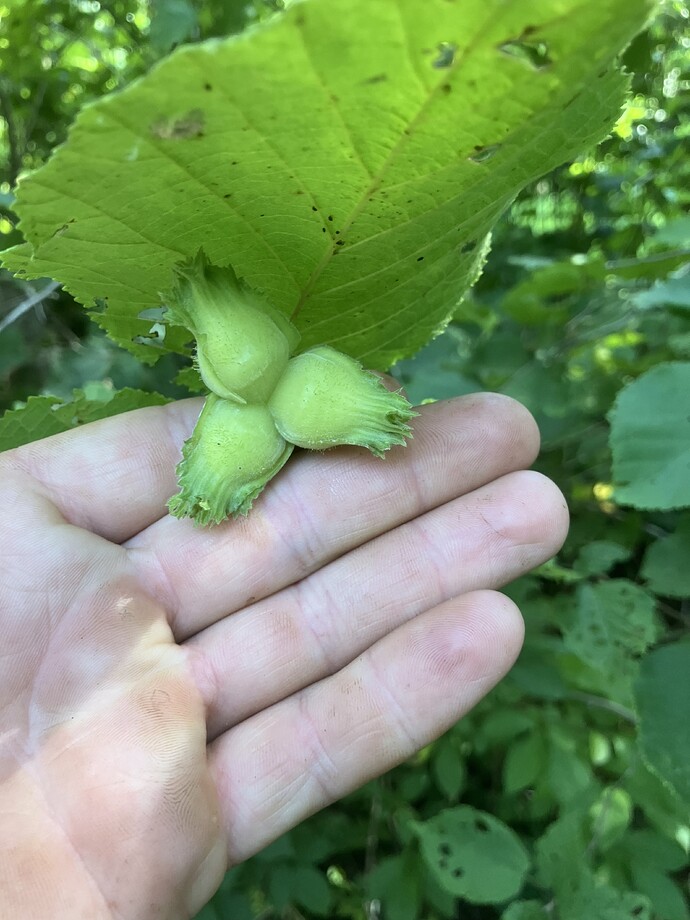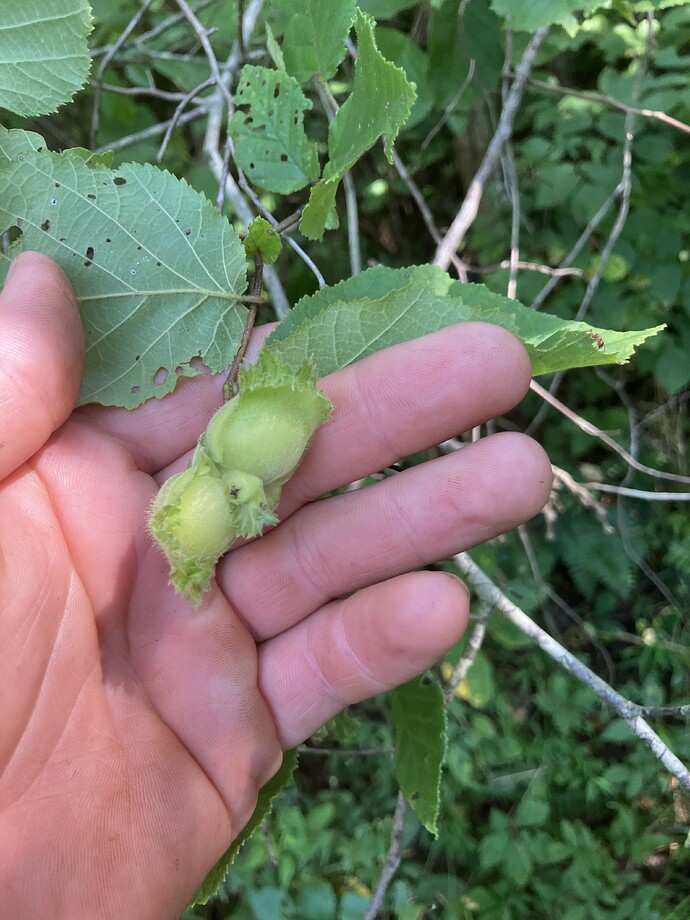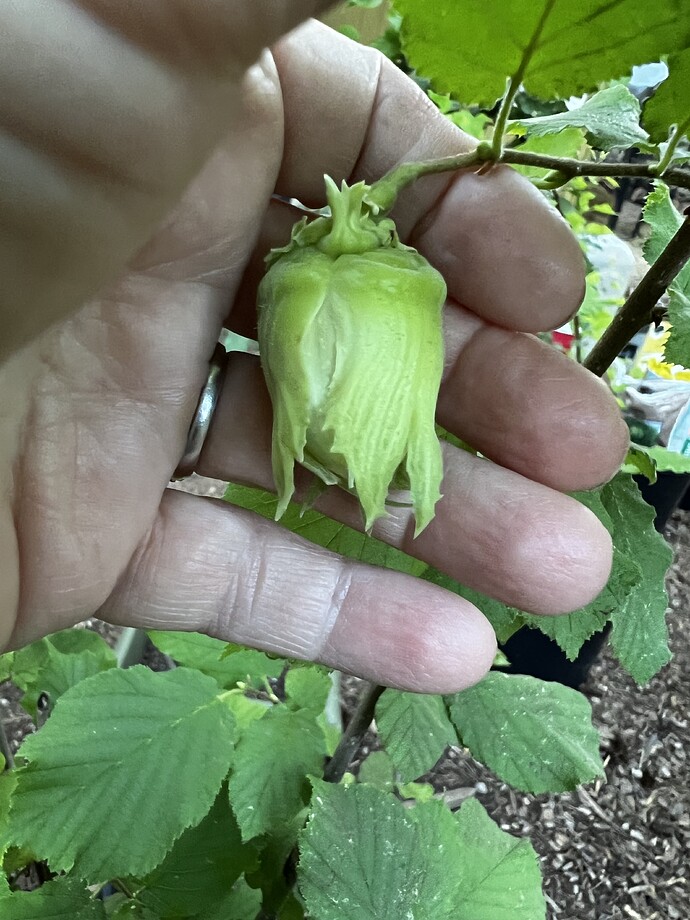nice! keep us posted.
We now have Barcelona, as it was on Stark’s $18 list this year. It is leafing out now.
I noticed some of the others are making that little cabbage looking flower now, I hope the new Barcelona throws out some catkins to pollinize them…
If not, at least we have a handful of almonds on one of our Garden Prince trees…
Wow, look at that beautiful hazelnut bush!
I hope it gives you fantastic tasting nuts.
if its like mine it will top out at about 10ft by 8ft. after it gets that big it just sends out renewal branches from the crown. mine are 6 yrs old and havent spread beyond that yet. they are early crosses made by badgersett for arbor day back in 15’.
unfortunitely, EFB here kills most pure euro. hazels. they have some hybrids that are immune but still in the trial stage. the beast from grimo is supposedly immune so my new seedlings should be as well. now if nut size is good we should have a winner!
Do you know if California has EFB?
We are at risk, as I have Ennis, Casina, Lewis, Clark, Hall’s Giant and now Barcelona.
I just found this:
Cause Anisogramma anomala, a fungus that has infected hazelnut orchards throughout the Pacific Northwest. A new mutation allowing the fungus to reproduce on cultivars with the Gasaway resistance gene was detected in 2023. The fungus has a life cycle of 2 or more years including a 12- to 15-month latent period when no symptoms are visible. In spring, spores are forcibly ejected and released in a sticky, white ooze in wet weather. Wind-driven rain and splashing droplets spread spores to young, developing shoots. Infection occurs in wet weather from budbreak through shoot elongation. Spores penetrate immature epidermal cells in the region behind the meristem where cell elongation occurs.
Stroma begin to develop the second summer after infection. Ascospores begin to mature in fall as the rainy season begins. Several hours of continuous rain are needed for ascospore release. Stroma will continue to sporulate, even after the diseased branch has been removed from the tree, until the canker dries out completely. Ascospores are shed all winter but cannot infect hazelnuts until spring. Cankers on large scaffold limbs, trunks or resistant cultivars may not produce stroma. New stroma develop each year as the canker continues to expand along and around the branch. Numerous new infections also occur each succeeding year.
The pollenizer ‘Daviana’ and the cultivars Ennis and Du Chilly are highly susceptible to this disease. ‘Casina’ is susceptible as is ‘Negret’ and most wild or escaped seedlings. The main industry cultivars Barcelona, Butler, Hall’s Giant, and Willamette have intermediate susceptibility. ‘Lewis’ and ‘Clark’ have quantitative resistance but can become infected through repeated exposure to EFB. ‘Dorris’, ‘Jefferson’, ‘McDonald’, ‘PollyO’, ‘Santiam’, ‘Thompson’, ‘Wepster’, and ‘Yamhill’ were highly resistant with the single dominant-resistance gene from ‘Gasaway’. These cultivars are susceptible to a new mutation of the fungus and are not considered resistant anymore. The Turkish hazel (C. colurna) has resistance to EFB. Cultivars bred and released for eastern production areas such as Hunterdon, Monmouth, Raritan, and Somerset are not recommended for the PNW.
One of my fingerlakes abundant seedlings seems to be making nuts larger than The Beast…this is the first year theyve made any nuts so theres only a couple but its encouraging to see.
It looks good. Hope the nuts hang on until they fully mature so you can get to taste test them.
Considering making little hardware cloth cages since theres not that many.
I obtained hazelnuts off a forum member last fall but embarrassingly can’t remember who. I’d like to obtain more seed at the end of the year. The chipmunks just found my seedlings and ripped them all up (2/22 left intact)
@resonanteye
@Fusion_power
Seedling hazels appear to be growing well. About 20 in one large container.
gorgeous!
Accidentally becoming a fibert grower haha. l am in the process of closing on our new home and noticed these beside the old garden spot. Looks untended so I’m guessing wild, but the whole property has been untended to one extent or another for decades, so maybe they are offspring of something someone planted once.
Well looks like that was wishful thinking. Squirrels decimated the entire crop of hazels and it was a lot of trees. I was able to pick up maybe a half gallon off the ground that they knocked off.
First year with total theft. Any ideas on how to end the squirrel problem. I put flashing on my fruit trees, but the hazels have tons of trunks.
I just realized that all five of the hazelnut trees we got last year during Starks $18.16 sale have hazelnuts on them.
Ironically, Hall’s giant looks like small shells in the Ennis one looks like it has huge shells.
Of course, who knows if they’re labeled correctly.
Also, I read that shell size doesn’t indicate nut size.
This year we added Barcelona because it was included on the 1816 sale.
I have yet to figure out a way to keep rodents from pillaging Hazelnuts. I think a dog trained to guard the trees would be the only way, but it would have to work at night also to go after the flying squirrels. I currently have 12 varieties of mostly Oregon hybrids, some from Rutgers, etc. No EFB so far.
I’m thinking about building several heavy duty roofed bird feeder type things to put on the ground and load with rat poison. Not sure if the squirrels will eat it, but I know the rodents will.
Please don’t poison the rodents, because that poisons their predators too. You need the fox, owls, coyotes.
There are predator safe poisons but yes care should be used when choosing one
